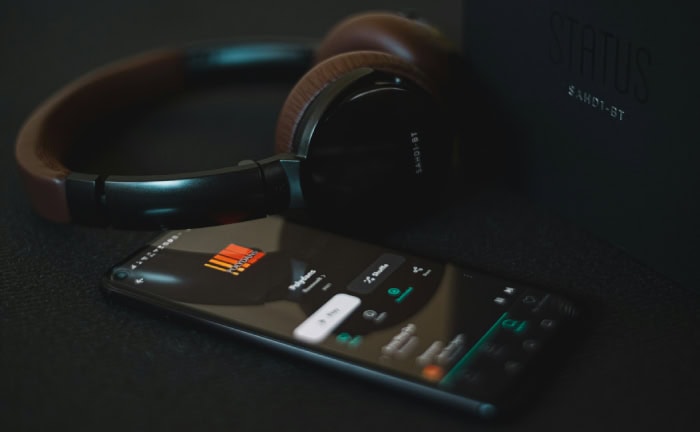How Many Songs Can 1GB Hold? Tune Up Your Storage

In today’s digital music era, our smartphones and devices have become portable jukeboxes, holding vast collections of our favorite tunes. But have you ever wondered just how many songs you can squeeze into a single gigabyte of storage? The answer might surprise you.
From the early days of MP3s to the high-fidelity lossless formats favored by audiophiles, the number of tracks that can fit into 1GB has evolved dramatically.
Factors Affecting Song Capacity
When it comes to storing music on your devices, several factors come into play that ultimately determine how many songs you can fit into a single gigabyte of storage. From the type of audio file format you choose to the length of the songs themselves, each element has a significant impact on the overall capacity.
Audio File Formats: MP3, AAC, WAV, and FLAC Explained
One of the most crucial factors in determining song capacity per gigabyte is the audio file format. Each format has its own unique characteristics and compression methods that directly influence the size of the resulting file.
Here’s a brief overview of the most common audio formats:
MP3 (MPEG-1 Audio Layer 3): MP3 is a lossy compression format that reduces file size by removing frequencies that are less perceptible to the human ear. This format is widely compatible and offers a good balance between file size and audio quality.
AAC (Advanced Audio Coding): AAC is another lossy compression format that achieves better sound quality than MP3 at similar bitrates. It’s the default format for iTunes and is commonly used by streaming services.
WAV (Waveform Audio File Format): WAV is an uncompressed audio format that preserves the original audio quality. However, this results in much larger file sizes compared to lossy formats like MP3 and AAC.
FLAC (Free Lossless Audio Codec): FLAC is a lossless compression format that reduces file size without sacrificing audio quality. While not as efficient as lossy formats, FLAC offers a compromise between storage space and sound fidelity.
The Role of Bitrate in Audio Quality and File Size
Bitrate, measured in kilobits per second (kbps), is another critical factor that affects both audio quality and file size. Higher bitrates result in better sound quality but also larger file sizes, while lower bitrates produce smaller files at the expense of audio fidelity. Here are some common bitrates and their implications:
- 128 kbps: This bitrate is commonly used for MP3s and offers acceptable audio quality for casual listening. A 128 kbps MP3 file is about 1 MB per minute of audio.
- 256 kbps: Often considered the “sweet spot” for MP3s, 256 kbps provides good audio quality while maintaining reasonable file sizes. A 256 kbps MP3 is roughly 2 MB per minute.
- 320 kbps: The highest bitrate for MP3s, 320 kbps offers excellent sound quality that is close to CD quality. However, the file sizes are larger, with a minute of audio taking up about 2.4 MB.
Song Length and Genre Variations
The length of a song also plays a role in determining how many tracks can fit into a gigabyte. Longer songs, such as classical compositions or progressive rock epics, will naturally take up more space than shorter pop or punk tracks.
Additionally, different genres tend to have varying average song lengths, which can impact the overall capacity of your music library.
Metadata, Artwork, and Non-Audio Data
Finally, it’s important to consider the presence of metadata, album artwork, and other non-audio data that can contribute to the overall file size. While these elements are typically small compared to the audio data itself, they can add up when dealing with large music collections.
Embedded album artwork, in particular, can significantly increase file sizes, especially if high-resolution images are used.
Estimating Song Counts

Now that we’ve explored the factors that influence song capacity per gigabyte, let’s dive into some practical scenarios and calculations.
Bitrate and Length
To estimate the number of songs you can store per gigabyte, you can use the following formula:
Number of Songs = (1,000,000 KB / (Bitrate (kbps) * Song Length (seconds) / 8))
For example, let’s calculate the number of 3-minute songs at 256 kbps that can fit into 1 GB:
Number of Songs = (1,000,000 KB / (256 kbps * 180 seconds / 8)) ≈ 208 songs
Keep in mind that this formula provides an estimate, as it doesn’t account for variations in song length or the presence of non-audio data.
Comparing Audio Formats: A Song Capacity Chart
To give you a better idea of how different audio formats compare in terms of song capacity, here’s a chart that shows the approximate number of songs per gigabyte for popular formats at various bitrates:
| Audio Format | Bitrate (kbps) | Approx. Songs per GB |
| MP3 | 128 | 140-170 |
| MP3 | 256 | 70-85 |
| MP3 | 320 | 55-70 |
| AAC | 256 | 80-100 |
| FLAC | Lossless | 30-50 |
| WAV | Uncompressed | 10-20 |
As you can see, lossy formats like MP3 and AAC offer significantly higher song capacities compared to lossless formats like FLAC and uncompressed formats like WAV.
Real-World Examples
To put these calculations into perspective, let’s consider a couple of real-world examples.
Example 1: The 1GB Mixtape Suppose you want to create a 1GB mixtape for a friend. If you use MP3s at 256 kbps, you could fit approximately 80 songs on the mixtape, assuming an average song length of 3 minutes.
However, if you opt for FLAC files, you’d be limited to around 40 songs due to the larger file sizes.
Example 2: Storing an Artist’s Discography Let’s say you want to store the entire discography of your favorite artist on your device. If the artist has released 10 albums with an average of 12 tracks each, you’d have a total of 120 songs.
Here’s how much space you’d need for different formats:
- MP3 (256 kbps): Approximately 1.4 GB
- AAC (256 kbps): Approximately 1.2 GB
- FLAC: Approximately 3 GB
- WAV: Approximately 6 GB
As you can see, the choice of audio format greatly impacts the amount of storage required for your music collection.
Maximizing Song Capacity: Storage Optimization Strategies
If you’re looking to squeeze the most songs possible into your available storage space, there are several optimization strategies you can employ. From using variable bitrate encoding to removing unnecessary metadata and artwork, these techniques can help you make the most of your device’s capacity.
Variable Bitrate (VBR) Encoding
One way to optimize storage space is to use variable bitrate (VBR) encoding when creating your audio files. VBR adjusts the bitrate dynamically throughout the song based on the complexity of the audio content.
This means that simpler passages, such as quiet intros or outros, are encoded at lower bitrates, while more complex sections, like choruses or intricate instrumentals, receive higher bitrates.
The advantage of VBR is that it can result in smaller file sizes without sacrificing perceived audio quality. However, the downside is that VBR files may not be compatible with all playback devices, and the encoding process can be more time-consuming than using a constant bitrate (CBR).
Removing Unnecessary Metadata and Artwork
Another way to optimize storage space is to remove unnecessary metadata and artwork from your audio files. While metadata, such as artist, album, and track information, is useful for organizing your music library, it can add up in terms of storage space.
Similarly, embedded album artwork, especially high-resolution images, can significantly increase file sizes.
To streamline your files, consider using a tool that can remove or minimize this non-audio data. Many audio tag editors allow you to strip away unnecessary metadata and artwork, leaving only the essential information.
Keep in mind, however, that removing this data may affect the organization and visual appeal of your music library.
Converting Lossless to High-Quality Lossy Formats
If you have a collection of lossless audio files, such as FLAC or WAV, you can save a considerable amount of storage space by converting them to high-quality lossy formats like MP3 or AAC. While this does involve a slight loss in audio quality, the difference may be imperceptible to most listeners, especially when using higher bitrates like 256 kbps or 320 kbps.
The main advantage of this strategy is that you can significantly reduce file sizes without a noticeable drop in audio quality. However, the conversion process is irreversible, so you’ll want to keep a backup of your original lossless files if you plan on converting them to a lossy format.
Weighing the Pros and Cons of Optimization Strategies
When deciding which optimization strategies to use, it’s important to consider the advantages and disadvantages of each approach. Here’s a quick summary:
- VBR Encoding: Smaller file sizes without sacrificing perceived quality, but may have compatibility issues and longer encoding times.
- Removing Metadata and Artwork: Reduces file sizes, but may affect the organization and visual appeal of your music library.
- Converting Lossless to Lossy: Significantly reduces file sizes, but involves a slight loss in audio quality and is an irreversible process.
Ultimately, the best optimization strategy for you will depend on your specific needs and priorities. If you value maximum storage capacity above all else, you may be willing to sacrifice some audio quality or organizational features.
On the other hand, if you prioritize sound quality and a visually appealing library, you may opt for a more balanced approach that retains some lossless files and metadata.
The Balancing Act: Sound Quality vs. Storage Efficiency

When it comes to storing digital music, there’s often a trade-off between sound quality and storage efficiency. Higher bitrates and lossless formats offer superior audio fidelity but consume more storage space, while lower bitrates and lossy formats save space but may compromise on quality.
Perceptual Differences: Bitrates and Formats
The human ear can only perceive a limited range of frequencies and details in audio. This means that beyond a certain threshold, increasing the bitrate or using a lossless format may not result in a noticeable improvement in perceived sound quality.
For most listeners, MP3s at 256 kbps or AACs at 256 kbps offer a good balance between quality and file size.
However, the perceptual differences between bitrates and formats can vary depending on factors such as the listener’s age, hearing ability, and the quality of their playback equipment. Some people may be more sensitive to the artifacts and loss of detail in lower bitrate files, while others may struggle to distinguish between a high-quality MP3 and a lossless FLAC file.
The Law of Diminishing Returns: Higher Bitrates
As bitrates increase, the improvements in sound quality become less noticeable. For example, the difference between a 128 kbps MP3 and a 256 kbps MP3 is more apparent than the difference between a 256 kbps MP3 and a 320 kbps MP3.
This is because the higher the bitrate, the more subtle the improvements become, leading to diminishing returns in terms of perceived audio quality.
For most listeners, bitrates above 256 kbps offer minimal benefits in terms of sound quality, especially when considering the increased storage requirements. Unless you have high-end audio equipment and a trained ear, you may not notice a significant difference between a 256 kbps MP3 and a lossless FLAC file.
The Audiophile’s Choice: Lossless Formats
For audiophiles and purists who demand the highest possible sound quality, lossless formats like FLAC and ALAC are the way to go. These formats preserve every bit of the original audio data, ensuring that no details are lost during compression.
Lossless files are ideal for archival purposes, as they can be converted to any other format without losing quality.
However, the trade-off for this uncompromising sound quality is much larger file sizes. Lossless files can take up several times more storage space than high-quality MP3s or AACs, which may be a concern for those with limited storage capacity on their devices.
Finding the Right Balance for Your Needs
Ultimately, the right balance between sound quality and storage efficiency depends on your individual listening habits, device capabilities, and personal preferences. If you primarily listen to music on your smartphone with budget earphones, you may be perfectly satisfied with 256 kbps MP3s or AACs, which offer good quality while maximizing storage capacity.
On the other hand, if you have a high-end audio setup and value every detail in your music, you may prefer to use lossless formats like FLAC, even if it means having a smaller music library due to storage constraints.
Consider your listening habits, the devices you use, and your sensitivity to audio quality when deciding on the optimal balance for your music collection. Don’t be afraid to experiment with different bitrates and formats to find the sweet spot that delivers the best listening experience while still being practical in terms of storage efficiency.


